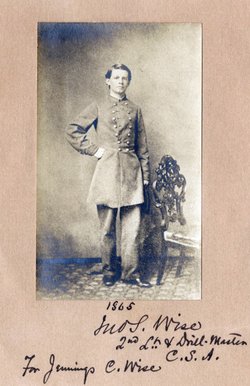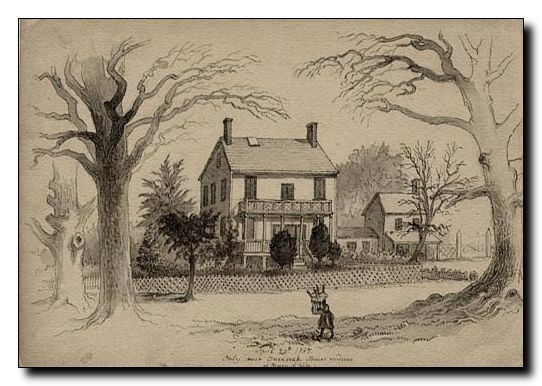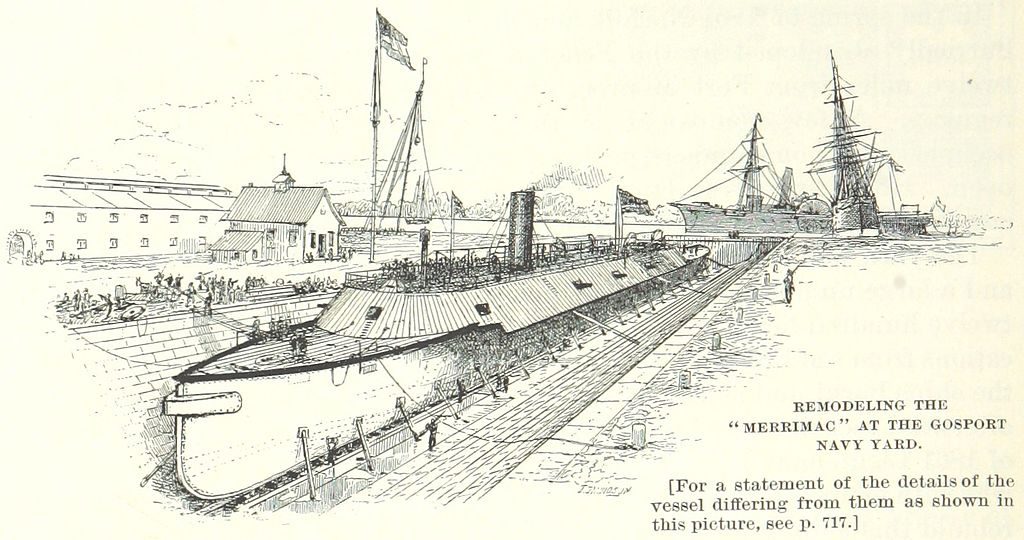Sunk In The Mill Pond: The Fate of the Ironclad Models

The model vessels floated quietly on the millpond water. On the bank, the boys aimed their toy cannon. They’d finally found a target that wouldn’t shoot back and would keep them from getting a scolding. Or so they thought…
After-all, who would want or look for model ships?
John Wise – one of Governor Henry Wise’s boys – had spent his childhood on the family plantation, early youth at the governor’s residence in Richmond, Virginia, and by 1860 was becoming obsessed with the idea of soldiering. In 1859, the boy had thrown together a makeshift uniform and tried to sneak onto a train with the local Virginia militia headed for Harpers Ferry during John Brown’s Raid.
At the Wise Family plantation – Only – on the peninsula, thirteen-year-old John spent idyllic summer days fishing, doing chores, and fatiguing his horse with attempted cavalry drill. His brothers and friends joined in the new military craze and the brass cannon was one of their favorite toys. Created by a convict in the Virginia Penitentiary, the eighteen inch barrel bore the inscription “Union and Constitution.” Those were controversial words in 1860, but that didn’t stop the boys from experimenting and drilling with their artillery piece. They quickly discovered that sticking the small ramrod into the sand and pouring melted lead into the hole created a wonderful “slug” projectile which could be fired from the cannon “to the great peril of everybody in the vicinity.”[i]

With a cannon and lead projectiles, the teens needed targets. First, the neighbor’s fine geese took the slugs. Next, Captain Johnson – a neighbor and retired sea captain – had cause for complaint. During his travels, Captain Johnson had brought back to the States six boys from India, possibly sea apprentices, who managed his river boat. The Wise gang fired a few cannon blasts at these boatmen, prompting a visit from the captain who informed Mr. Wise about his sons’ behavior and threatened to shoot back with a shotgun if the nonsense didn’t stop immediately.

Henry Wise summoned his sons and lectured (or punished) them for a half-hour before releasing them to make an apology to Captain Johnson. Glumly, the boys hauled their cannon out to the millpond on the far side of the farm from their unhappy neighbor.
Rummaging in the house’s basement, they made an exciting discovery. Later, John Wise recalled, “…we boys found these models in some old boxes, and took them down to our millpond, where we anchored them as part of our miniature fleet…. This was in 1860.”[ii]
These particular models had historic significance. Years earlier when John’s father had served in Congress he sat on the Committee of Naval Affairs and made the acquaintance of Commodore James Barron. “Besides other contributions of value to the navy, [Barron] conceived the idea of an impregnable steam powered, armed with a pyramidal beak, and a terrapin-shaped back at an acute angle to the line of projectiles fired from its own level. He called it a marine catapult, and had complete models, plans, and descriptions, which he exhibited to the naval committee, in the effort to have a ship constructed on these lines. He made little impression, however; for in those days steam navigation had attained no very great success, much less the utilization of iron upon ships. He subsequently presented the model to my father, who had also a large number of models of other vessels.”[iii]
With the cannon hauled to the edge of the millpond and floating models on the water, the temptation seemed irresistible. The boys loaded the lead slugs and opened fire on the ironclad models. Unluckily for the little ships, no real iron had been used in the modeling and “such was the precision we had acquired in our practice upon…geese and [boatmen], that in a few days the models of Commodore Barron…were riddled, and ignominiously disappeared. They were resting in the mud at the bottom of the our millpond when the war broke out.”[iv]
The next year as the newly formed Confederacy armed for war, Henry Wise took interest in the partially destroyed Merrimack left at the nearby navy yard. He remembered the discussions about steam powered, ironclad vessels, shooting cannons, and possibly becoming an invincible weapon. Then occurred a scene to put fear in the hearts of young lads: “Imbued with this idea, he [Father] instituted rigorous inquiries for the model; but, for reasons which may well be understood, none of us boys aided him much in his search.”[v] No one wanted to confess that the ironclad models had been sunk in the millpond by some little rebels with a toy cannon.
Eventually, Henry Wise gave up his search for models – without discovering the wrecks or the culprits – but he continued to take an active interest in the idea of an ironclad ship, even writing to General Lee and sending details and drawings from memory. In later years, the former governor firmly believed his sketches and writings influenced the creation of the CSS Virginia. When construction on the ship began, he took his sons to see the progress and boys also liked to row near the building area to check on the new ship which was similar to the models they had destroyed months earlier.

By 1862, the Confederate ironclad was ready for war. Young John Wise witnessed the part of the Battle of Hampton Roads on March 8th, later recalling: “It was a time of supreme excitement and supreme suspense; for the details, we who had no glasses were dependent upon those who had… Bang – crash – roar – went the guns, single shots and broadsides, making all the noise that any boy could wish.”[vi]
All that any boy could wish… Young John Wise unknowingly sunk valuable historical models in the millpond, got away with it, witnessed the real battle with ironclads, and lived through the war to confess the deed and record his impressions of a truly historic moment in naval warfare.
Sources:
Couper, W. (2005). The Corps Forward: Biographical Sketches of the VMI Cadets who Fought in the Battle of New Market. Charlottesville, VA: Mariner Publishing.
Wise, J.S. (1899). The End of an Era. New York, NY: Houghton, Mifflin and Co. (Accessed at The Huntington Library, San Marino, California.)
[i] Wise, J.S. (1899). The End of an Era. New York, NY: Houghton, Mifflin and Co. Page 192.
[ii] Ibid, Page 192.
[iii] Ibid, Page 191.
[iv] Ibid, Page 193.
[v] Ibid, Page 193.
[vi] Ibid, Page 199.
Great story, Sarah! Thanks.
Enjoyable reading; thanks !
That’s a delightful piece of research. Thanks for the chuckle.
Glad you enjoyed it. Johnny Wise wrote some delightful accounts, and I was trying not to laugh in the library archives while reading some sections of his book.
Henry A Wise leaves Governorship Jan 1, 1860 and moves to Rolleston (Princess Anne County). The ancestral home of the Moseley’s, his brother John Cropper Wise bought it in 1850. Rest of Moseleys migrate to NE North Carolina. He sells to Henry for 50 percent more in 1859 because he couldn’t take care of it anymore (wheelchair?). The mill pond was a tidal pond created twice a day on Moseley Creek (Mill Creek). His son talks about this in End Of An Era. I was under the impression that the mill pond was at Rolleston.
Tim Mosley (13 generations from Arthur Moseley, 2nd son of William and Suzannah)